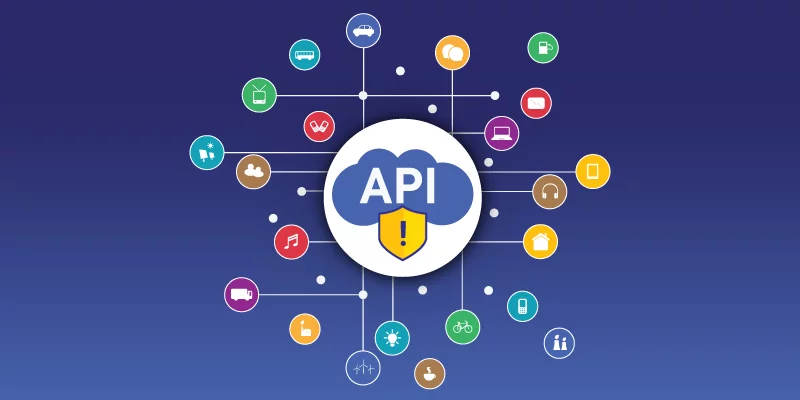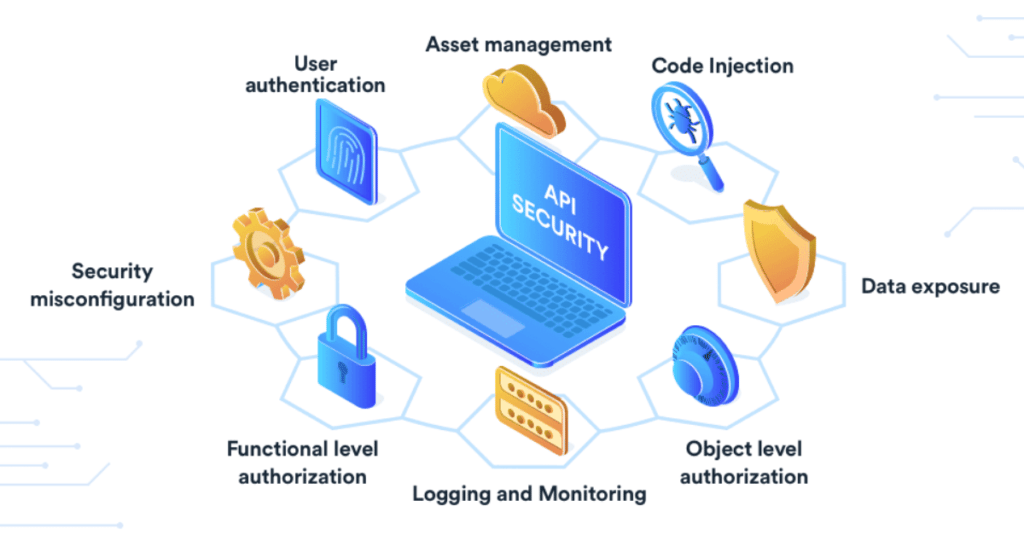
16 Sep Everything you need to know about API security
Everything you need to know about API security
What is an API?
API’s or Application Programming Interface is a software intermediary that allows two applications to talk to each other. API’s simplified app development lets your service or product communicate with other products and services without knowing how they are implemented. An API is a set of definitions and protocols for integrating and building application software.
With more companies using API’s, they are fast becoming the weak link and an easy target for cybercriminals. Surprisingly, despite the rise in the use of API’s they are grossly ignored and fly under the radar of security professionals. Hence APIs are easy to target, and many attack incidents will continue to occur until the risks associated with the openness of the API’s are not addressed. Organizations that suffer data breaches undergo reputational as well as operational damage. Protection against such attacks is, therefore, a top priority, and hence the primary focus should be on the security of the API.

Potential risks of API's
The rise in the use of APIs provides a large attack surface that is exposed to the threat actors. Other factors that force the attackers to intensify their attacks on APIs are that the APIs use the client hardware for their mobile and web apps to do data processing which results in a large amount of client-server traffic. In addition, the APIs are constantly used or leveraged to serve up data to many browsers and mobile endpoints, which results in the processing of many HTTP payloads, each of which offers a perfect opportunity for an attacker to exploit the openings.
APIs by design gives internal access to the servers inside through endpoints to the outsiders. Many API’s have weak access controls, making it easier for malicious attackers to enter through the endpoints and gain control over the system. The data and the entire security system are at risk of being compromised as the attacker may pivot a compromised system and move across to other systems.
It is a common belief that APIs are protected by server-level monitoring gateway and logging functions. The organizations assume that if a web server is under the protection of a robust firewall, then the APIs going through and from are also protected by the firewall. However, that is seldom the case. The server’s boundaries do not cover the potentially huge surface area of attack the APIs provide outside the server.
Some common attacks against web APIs.
The same type of attacks used against a networking system is also used against APIs. Some of the attacks are:
Injection: Occurs when the attacker is able to slide in or insert malicious codes or programs into a system through input validation.
Cross-site scripting (XSS): This type of injection attack occurs when a malicious code or a script is inserted through a vulnerability directly into the code of a web app or a web page.
Distributed Denial of Service (DDoS): In this attack, a network system is flooded with unwarranted and increased traffic than it can handle, which causes the system to crash and deny service. DDoS attacks are most common with API endpoints.
Man in the middle (MIM): This type of attack occurs when an attacker places himself between two communicating devices, intercepts traffic and acts a proxy making the system believe that they are communicating with each other.
Credentials stuffing: This is a type of attack in which credentials are stolen through a data breach to gain unauthorized access to the system.
Best practises for securing APIs
Protecting against API-level attacks requires elevating their importance within your security culture and infrastructure. The following recommendations will help:
Have a robust API model: APIs must be built to best practices. Therefore, a coherent training and communication program that instructs how to build a strong API structure should be undertaken that strategically checks for security lapses and regularly updates and modifies the APIs as per the best practices. A robust API model lays a solid foundation and is in no way affected even if there is a change in members of the security teams or if there is attrition.
Use predefined mechanisms: By using predefined repeatable processes and standards such as predefined security patterns, code structures, design standards and reference architectures, you can ensure the best and most secured practices are being used.
Enforce a zero-trust model: A zero trusted ensures that the APIs accessed within or outside the network perimeter is always authenticated and monitored to prevent breaches or intrusions. The zero trust model should be enforced from the beginning of the API life cycle and should be carried out at the consequent stages.
Manage your APIs and maintain an inventory: A company may have many APIs that it is unaware of sometimes. The organization should make an inventory list of its APIs and then move on to secure and manage them individually. Conducting perimeter scans helps you to discover all your APIs.
Have a strong authentication and authorization API process: Many of the company’s APIs are publicly available, which don’t have a strong authentication process. Since public APIs provide access or an entry point to the attackers to the organization’s database, the organization must enforce a strong authentication and authorization mechanism to control and deny access.
Enforce the least privilege principle: The least privilege access states that only minimum access to the system is granted to users, processes, programs, or system devices. Only minimum access needed to complete a stated request should be granted, which minimizes the risk of system infiltration.
Encrypt APIs using transport layer security and share only limited data: Some APIs contain sensitive payload data and critical information like login credentials, credit card, or bank information. Such APIs should be TLS encrypted so that there are no data leaks. Remove information such as login details, passwords, keys from APIs that are not meant to be shared. Incorporate scanning tools to limit the accidental exposure of sensitive data.


